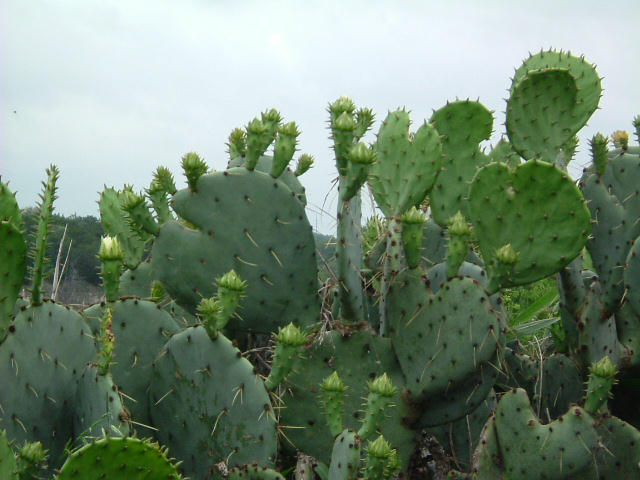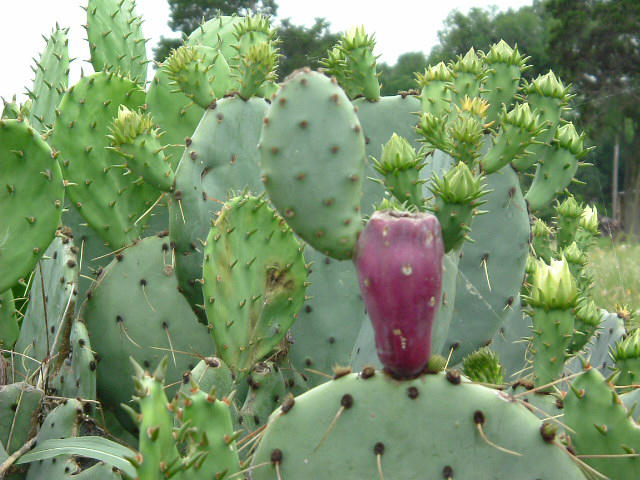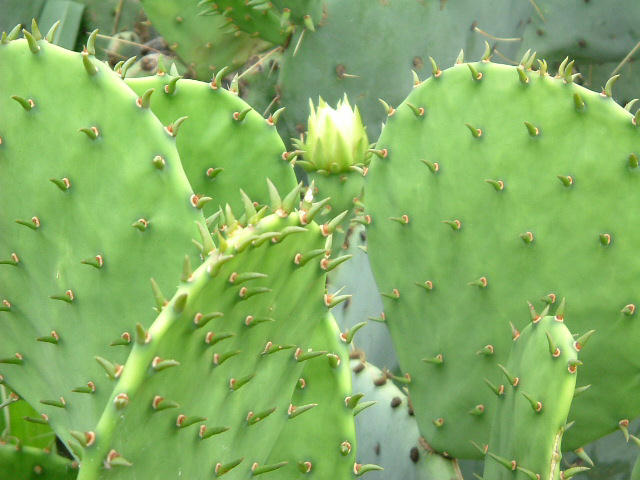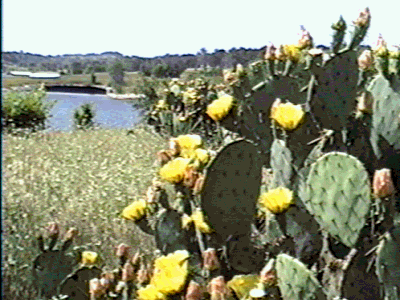Nathan J. Penn
Texas' State Plant
( the Prickly Pear Cactus )

|
|
The Prickly Pear is of the Opuntia genus and was named the state plant of Texas in 1995. There are over a dozen species of the Prickly Pear including a smooth or "spineless" Prickly Pear. The Prickly Pear have fleshy flattened pads which are stems of the plant which serve as water storage, photosynthesis and flower production. The flower forms on top of the immature fruit and is a yellow, red or purple. Both the pads and the fruit are edible and sold in some stores. The mature fruit is called prickly pears, cactus pears or "tunas". The flavor of the ripe fruit varies with the species although all are edible. The fruit after gently urging it from its stickery skin can be eaten raw (sometimes with lemon). It can also be cooked for use in preserves and jams or cooked into syrup for jelly or "cactus candy". The syrup can be reduced further into a dark red or black paste which can be ferminted into an alcoholic drink called "coloncha". The pads (after removing the spines) called "cladodes" or "nopales" when whole and "nopalitos" when diced taste something like greenbeans, I am told. They can be added raw to salads or cooked in omlettes or boiled or fried like eggplant. Both the pads and the fruit are of the prickly pear cactus are rich in slowly absorbed fibers which may keep blood sugars stable and pectin which is contained in the pulp may lower diabetics' need for insulin. Some studies show that the pectin may also lower the levels of "bad" colesterol while leaving the "good" colesterol levels unchanged. The sap is sometimes used in first aid similar to the aloe vera plant. Cut off a potion of the pad and crush it into a pulp and squeeze the juice onto a cut, burn or bruise. The sap will soothe the wound. The sap is also sometimes used as a mosquito repeallent. |

|
|
The Prickly Pear cactus is tolerant of a variety of soils, temperatures and moisture levels. They grow best in sunny location in well drained soil with some protection from winter winds. The plant can tolerate almost as much water as other plants while once established can tolerate drought conditions. These plant can grow from seed as well as from pads. If propogating a plant from a pad, cut a pad that is at least six month old. Allow the pad to sit upright for several weeks in warm dry weather to form a callous where it was cut. Then plant the cactus upright (hold it in place with small rocks) in equal parts soil and sand where the pads face east and west. Do not water. The water retained in the plant will be enough to promote root formation. Too much water will cause rot. |

|

|